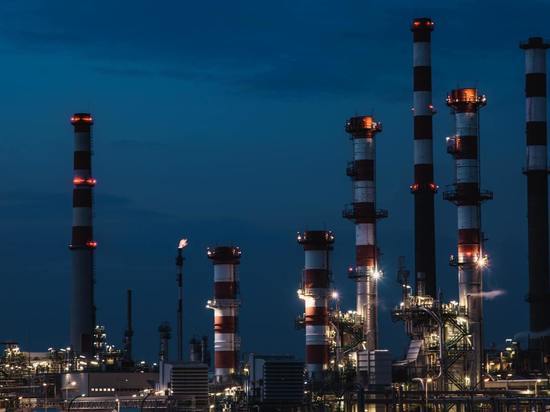The EU will accelerate the introduction of a price limit on Russian oil
[ad_1]

The European Union predictably decided to speed up the introduction of a price ceiling on Russian oil. It seemed that the topic was shelved, but the situation changed after the announcement of partial mobilization in the Russian Federation. According to Bloomberg, the alliance intends to include the measure in a new package of sanctions that it will adopt in the coming weeks. But is there any practical, rather than political, sense in this?
The eighth package of restrictions from the EU may affect, in particular, the sphere of information technology, cybersecurity, software development, as well as luxury goods, reports the Financial Times, citing European officials. At the same time, Brussels recognizes that it will not be easy to agree on the specific parameters of sanctions between all 27 member states. As Hungarian Foreign Minister Peter Szijjarto said, it would be better for Europeans not to mention package number 8 at all, since this unnerves the markets, increases inflation and the energy crisis in the eurozone.
In principle, the West was going to set a price limit for Russian oil long before the start of the mobilization campaign in Russia. This idea took concrete shape on September 2, at the online summit of the G7 (G7) finance ministers, where an agreement was reached. The goal is to achieve a reduction in Russia’s raw material revenues and its ability to finance military operations in Ukraine, as well as to reduce the impact of these profits on the global hydrocarbon market. At the same time, the participants did not determine the size of the ceiling, deciding to return to this issue later.
But the main feature of the mechanism of the introduced limit is the embargo on servicing the sea transportation of oil and oil products from Russia, purchased at a price exceeding the ceiling. In addition, insurance and financing of companies involved in transportation will be prohibited.
The measure was originally expected to come into effect on 5 December. Perhaps now the EU representatives will try to move it to an earlier date. As calculated by the International Energy Agency, due to the loss of markets, Russia will be forced to cut production by about 2 million barrels per day. At the same time, according to Kpler analysts, Moscow will find buyers for at least half of the volume of oil that the EU intends to abandon. We are talking about Indonesia, Pakistan, Brazil, South Africa, Sri Lanka and a number of countries in the Middle East. Together they will be able to buy up to 1 million barrels of Russian oil per day.
“The EU can agree on an oil price ceiling quickly, as countries such as Hungary and Slovakia, which are critically dependent on oil supplies from the Russian Federation, have already received exemptions from the embargo. Accordingly, they are unlikely to veto such EU decisions,” – says Kirill Melnikov, head of the Energy Development Center.
In his opinion, the EU ban on maritime transportation, insurance and reinsurance of Russian oil will not apply to cargo destined for third countries. – if the sale price is within the ceiling.
Whether the EU itself will buy such oil or stay true to the embargo imposed remains to be seen. It is more likely that the embargo will continue. As for the parameters of the limit, according to Melnikov, they will fit in the range of $40-60 per barrel, and more likely closer to the lower limit. Surely Brussels will take into account that the Russian budget for 2023 is formed based on a price of $60 per barrel. It should be noted that at the end of the summer a barrel of Brent brand cost over $100 on the world market, now it has dropped to $90.
“The likelihood that the EU will set a price ceiling for Russian oil is quite high, – says Mark Goykhman, chief analyst at TeleTrade. “And, since the European embargo on sea supplies will come into effect from December 5, this ceiling will affect exports from the Russian Federation not to Western countries (the United States and Great Britain abandoned our hydrocarbons earlier), but to other regions of the world – Asia, Africa, Latin America.”
It appears that the ban will be largely enforced as the shipping and insurance market is concentrated in European and American companies. As for the size of the price limit, on the one hand, it will be higher than the cost of production and transportation, and on the other hand, it will limit the possibility of obtaining significant profits for Russian suppliers. It could be $60-70 per barrel, the analyst believes.
“However, all these measures are difficult to control, – Goykhman emphasizes. – China and India have not yet expressed their readiness to join the pact, to become part of the “broad international coalition” declared by the G7. Moscow warned that it would not sell oil to the initiators of the embargo.
Thus, conditions are created for explicit and implicit possibilities to overcome the limit. Moreover, with its introduction, world prices are likely to jump – according to forecasts, up to $120-130 per barrel. And many buyers will be tempted to buy raw materials at prices below these market prices, but above the “ceiling”. And Asian companies can start to carry out transportation and insurance to a greater extent when they realize that it is beneficial for them.”
[ad_2]
Source link






